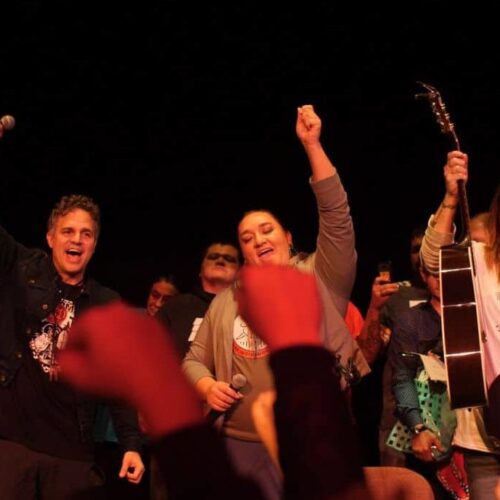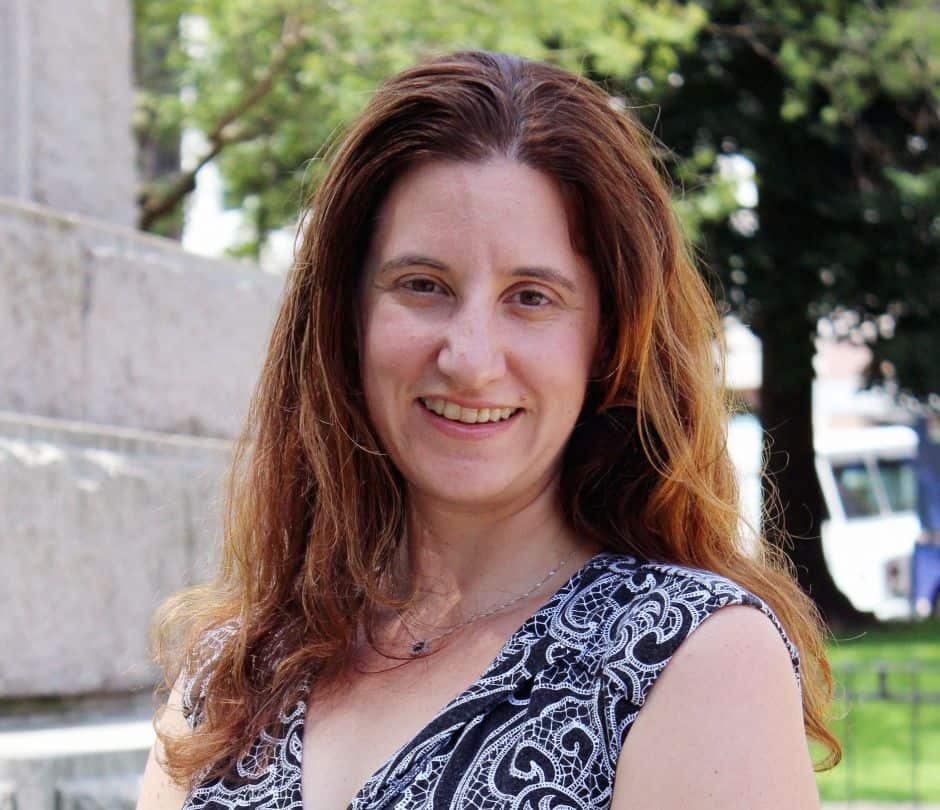This article is co-published with Public Radio International.
Introduction
Terry Yellow Fat shares his home on the Standing Rock reservation in North Dakota with his wife, his son and his nephew.
All four of them, he says, have different street addresses on their North Dakota driver’s licenses, even though they live in the same house — a sign of how complicated a new state voter identification requirement for a residential address could be for residents of the state’s reservations.
Yellow Fat says he went and got an official residential street address assigned a year or so ago through the county’s 911 coordinator, but when he tried to use it to receive a package, the deliveryman couldn’t find his house. Instead, he told Yellow Fat the address had sent him to a local bar a few blocks away.
Now, Yellow Fat, 69, a retired teacher and school superintendent, is not sure what to do about voting in next month’s general election, which features a hotly contested U.S. Senate race between incumbent Democrat Heidi Heitkamp and Republican Rep. Kevin Cramer. Yellow Fat’s license has a residential street address, as required to vote, but he knows it isn’t the one he was assigned by the 911 coordinator — and he’s worried about using it.
“I’ve been told by an attorney that maybe if you use that they might try to get you for voter fraud,” he said. “So I’m at a loss on what to do here. Maybe not even go.”
A U.S. Supreme Court decision earlier this month allowing the voter identification requirements to go into force in North Dakota for the general election has sparked a massive, unprecedented effort to help Native American voters in North Dakota comply — and vote.
(Update, Nov. 1, 2018: ‘Federal judge won’t stay North Dakota voter ID law Native Americans say hurts them‘)
Many people on the reservations lack residential street addresses — a key voter ID requirement — because they have never needed them. Post office boxes are commonly used for mail, and directions rely on landmarks.
Yellow Fat said he and his family have different addresses on their identification. For example, he said he made up a number on the spot, but used the street sign at the corner for the street. His wife, he said, offered the address assigned by the sheriff.
The numbers on Standing Rock houses represent not an address, but relate to when the structure was built by the tribe.
Leaders of the state’s tribes are pouring resources into making sure residents obtain addresses in some way and offering free updated tribal identification that would meet the requirements, available up through Election Day. Nonprofits are raising hundreds of thousands of dollars and promising the cash will go towards helping Native American voters in the state.
Tribal leaders say the requirements are an attempt to disenfranchise Native Americans, the state’s largest minority group.
“We believe the requirement of a physical, residential property with a street address was intended to disenfranchise Native American voters,” four of the tribes said in a joint press release issued Oct. 17. “We will not be silenced by the blatant efforts to rob our people of our voice.”
North Dakota Secretary of State Al Jaeger, a Republican, said the voter identification requirements aren’t meant to disenfranchise anyone, only to ensure the integrity of elections. He argues that most states require voters to have a residential address at some point.
“I don’t know why North Dakota is being singled out in being somewhat unusual,” he said.
Last weekend, Mark Ruffalo, the Dave Matthews Band and Billy Ray Cyrus joined Native American performers for a star-studded series of events on North Dakota reservations meant to promote voting.
But is it enough to prompt Native Americans here to stand and vote?
‘That’s not going to stop us’
The Center for Public Integrity examined the barriers to the ballot box for Native American voters in North Dakota earlier this month as part of the “Abandoned in America” series. Voter turnout in Sioux County, composed of the North Dakota side of the Standing Rock reservation, has averaged the lowest in the state between 2008 and 2016, according to a Center for Public Integrity analysis of data from the North Dakota secretary of state’s office.
Two other counties with majority Native American populations — Benson County, home to much of the Spirit Lake reservation, and Rolette County, home to the Turtle Mountain reservation — have the second- and third-lowest turnout in the state over the same period.
Nonetheless, Native American votes proved crucial to Heitkamp’s upset victory in 2012, and advocates now say the voter identification requirements are prompting a backlash they hope will mean record turnout.
“You have to respond saying that’s not going to stop us,” said OJ Semans, co-executive director of Four Directions, a South Dakota-based nonprofit that advocates for Native American voting rights and is planning a get-out-the-vote operation that includes transportation to the polls.
“New angle. We will vote. We are best in times of crisis,” Phyllis Young, a Standing Rock tribal elder, told the Center for Public Integrity the week of the Supreme Court ruling.
“There’s fear in the community that If we don’t vote this time things might happen to us worse,” said Danielle Ta’Sheena Finn, the Standing Rock Sioux Tribe’s director of external affairs and one of the primary organizers of the tribe’s efforts to help members comply with the state’s identification requirements.
Standing Rock had issued 250 new tribal identification cards as of Oct. 25, Finn said, and was expecting about 100 students shortly — high school seniors who were old enough to vote.
At the Spirit Lake reservation Thursday afternoon, there was a line of tribal members waiting to get new identification when a reporter called. On the Turtle Mountain reservation, demand for the new IDs were so high, the tribe’s machine overheated and began melting IDs, according to a Forum News Service report.
‘Is this finding a loophole?’
North Dakota doesn’t require voter registration, and has long been an easy state in which to vote.
Since 2013, however, the state legislature has passed measures stiffening voter identification requirements and eliminating so-called “failsafes” for voters who don’t meet them.
Earlier this year, in the latest round of litigation, a federal judge found the requirements, including identification carrying a residential street address, disproportionately burdened Native American voters. He also found that thousands of Native Americans were less likely to possess identification that met the requirements or the documentation required to obtain identification.
An appeals court in September lifted the stay that prevented the residential street address requirement from being enforced. In October, the Supreme Court declined to stay the appeals court ruling, allowing the street address requirement to go into effect for the November election. In a dissent, Justice Ruth Bader Ginsburg said the “risk of disenfranchisement is large.”
North Dakota officials are instructing people without residential street addresses to contact the 911 emergency coordinators in their county to request one.
In some cases, though, tribes are finding other ways to assign addresses.
Asked if poll workers would accept tribal identification with addresses that hadn’t been issued through the 911 system, including ones that residents had made up, Jaeger said it was “hard to speculate on.” If voters had identification meeting the requirements, poll workers “most likely” would accept it, he added — though he urged tribal leaders to steer people to the 911 system.
“I guess all I can do is go back and say if the people issuing the address are concerned that it is not right, I would hope that they would make every effort to see that it’s a correct address and help those people out,” Jaeger said.
The Rev. John Floberg, a priest for two Episcopal churches on the North Dakota side of Standing Rock, in Cannon Ball and Fort Yates, has obtained addresses through the 911 system for both churches, and is planning to open them as homeless shelters the week of the election. This will provide tribal members who have no other possible residential address the opportunity to use the church/shelter addresses to vote.
“Is this finding a loophole?” Floberg asked. “If the state of North Dakota wants to play games then we’ll find ways to do that.”
Four Directions’ Semans said he has been working to obtain reliable maps of precinct and polling places and set up transportation to the polls. In addition, Four Directions has been taking voters to cast absentee ballots, which has involved showing up in person at the secretary of state’s office to clarify the acceptable color of ink that can be used to fill them out..
In the meantime, he’s setting an ambitious voter turnout goal of 55 to 60 percent for Standing Rock — a figure that would more than double Sioux County’s turnout for the 2014 midterms and even beat the 2008 presidential election turnout, the highest of the past five federal elections.
“Anything less than that,” he said, “then we really haven’t done our job.”



Join the conversation
Show Comments